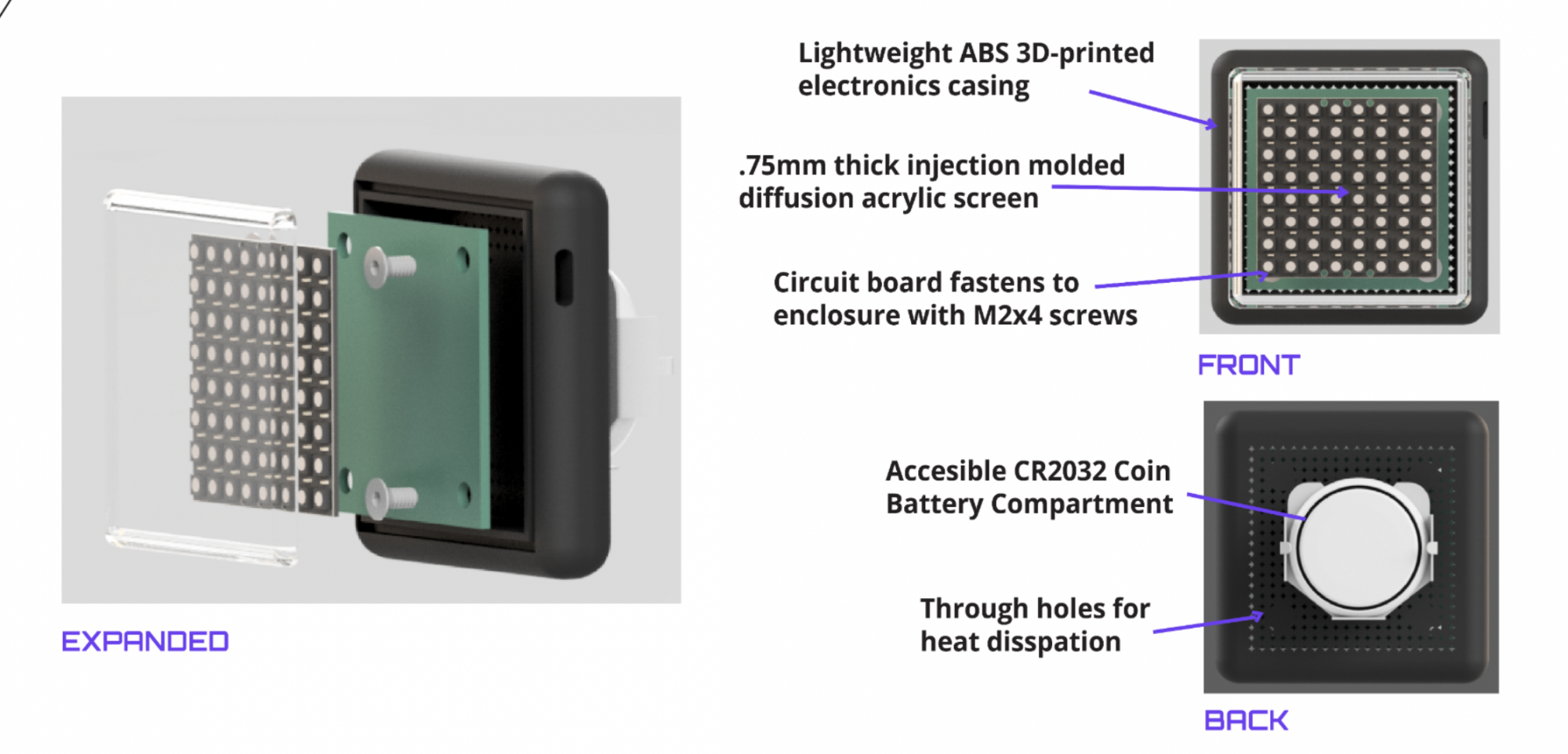Economic & Global Considerations
Breaking into the consumer electronics market from a high fashion/ luxury standpoint not only capitalises on the increasing value ( Expected value of $USD 186.14 billion by 2030) of the wearable segment, but it also takes advantage of the movement in the fashion industry towards digitisation and virtual design [2].
The optimal target market demographic for this project is consumers of all demographics between the ages of 15 – 35, as they represent $350 million of spending power in the US as of 2020 [3]. Additionally, according to a 2023 forecast conducted by the business of fashion [4], the younger generation prioritises spending money on fashion over traditional entertainment categories (e.g. dining, music media etc.)
Environmental, Societal and Cultural Considerations
We believe our product aptly considers the needs and values of our proposed user base.
The key differentiation factor of our product is that it enables users to purchase a single accessory that they can easily customise through an associated application. Unlike previous, generations younger consumers place a high value on fashion that reflects their values and self expression [3], with 82% of GenZ believing fashion is an important tool to establish identity [5]. We believe our product directly address this trend towards personalisation, by enabling users generate unique to articulate their individuality.
Moreover, we believe our product offers an environmentally sustainable option, by promoting reduced consumption. Adaptable fashion inherently has a larger number of use cases than traditional apparel. Cyber jewellery can be instantly adjusted for different events, trends or environments, reducing the need to buy multiple products for different situations. This is economically beneficial and reduces strain on the environment by limiting material, product and distribution wastes. Furthermore, emphasising the sustainability of our product appeals to the ethical values of our market. Specifically, younger consumers tend to spend more on sustainable products.
Sources:
- https://www.grandviewresearch.com/industry-analysis/wearable-technology-market#:~:text=How%20big%20is%20the%20wearable,the%20wearable%20technology%20market%20growth%3F
- https://www.mckinsey.com/industries/retail/our-insights/state-of-fashion
- \https://www.mckinsey.com/~/media/McKinsey/Industries/Retail/Our%20Insights/Renewed%20optimism%20for%20the%20fashion%20industry/The-state-of-fashion-2018-FINAL.ash
- https://www.businessoffashion.com/reports/news-analysis/the-state-of-fashion-2023-industry-report-bof-mckinsey/
- https://www.businessoffashion.com/reports/retail/gen-z-fashion-in-the-age-of-realism-bof-insights-social-media-report/
What are the most significant risks that could jeopardize the success of the project? How are these risks being managed? What contingency plans are ready?
The key issues we have identified that present the capacity to jeopardise our project center around two factors: user comfort and communication between our device and the application interface:
Size, Weight & Ergonomic Constraints
As our group is not addressing a particular existing need, but rather attempting to create product that offers a unique luxury experience for consumers, it is important for us to focus on delivering a comfortable and safe product to appeal to our end-user. Thus our largest design hurdle will be working around the small weight and size constraints.
To address this issue from a design standpoint we are looking at potentially adopting an ear cuff design to increase the available surface area we have to work with and to reduce strain on the ear lobe. Additionally, though we had originally considered casting our design in metal, we have researched alternative, more lightweight materials such as biopolymers and resins. Beyond research, throughout the design process we plan to periodically prototype, test (user trials, stress tests etc.) and refine our design to optimise user comfort.
From a hardware perspective, we also believe that there will be a risk that the overall size of the PCB and battery will exceed our proposed constraints. We plan to manage the PCB size risk by thinking about the PCB design as early as possible. We need to identify the additional circuit components besides the microcontroller and think about how we can use as least components as possible. Additionally, if the battery we need to use to fulfill the battery life requirement exceeds the required size, we plan to prioritize the size requirement and consider shortening the required battery life.
BLE Communication
Additionally, we anticipate that achieving reliable and fast communication between our application and peripherals will be a major obstacle across the course of our project. We have planned to use BLE due to its high data transfer rate and high compatibility with smartphones, however there is a potential to have issues getting the BLE to work with a python script.
The BLE risk is managed through developing firmware on the nucleo boards. Nucleo boards are easier to work with than customized PCB. Making the peripheral driver work first on nucleo is an effective way to manage the BLE risk. Additionally, we found a GitHub repo that demonstrates the BLE functionality on STM32WB: https://github.com/vladimir-vakhter/stm32wb55_ble_p2p/blob/main/STM32_WPAN/App/app_ble.c. Consulting the code in this repo when get stuck is also a strategy on managing the BLE risk. Since STM32 firmware is generally finicky, a contingency plan is using another microcontroller that has BLE functionality such as ESP320.
Were any changes made to the existing design of the system (requirements, block diagram, system spec, etc)? Why was this change necessary, what costs does the change incur, and how will these costs be mitigated going forward? ” Provide an updated schedule if changes have occurred:
At this point in time, we have not made any significant updates or changes to the design or schedule presented in our proposal. As our project is highly dependent on physical design constraints, we are currently waiting to receive our parts and conduct initial testing before we present a fully fleshed out design. We aim to finalise our development plans and preliminary designs across hardware, software and industrial design this week to ensure we are fully prepared and streamlined for when our parts arrive
